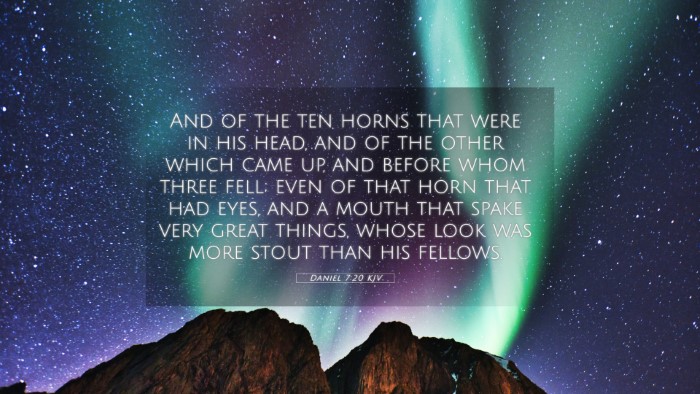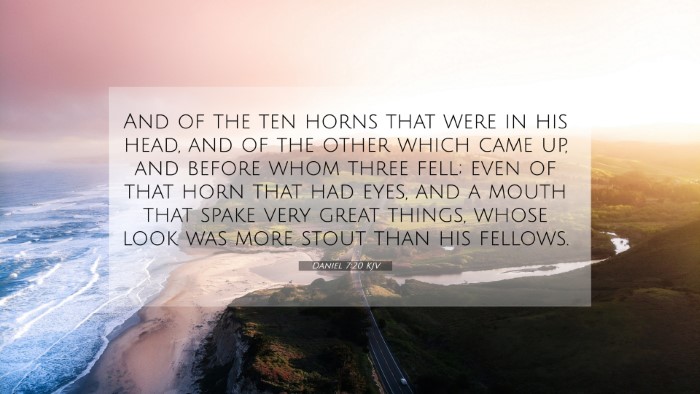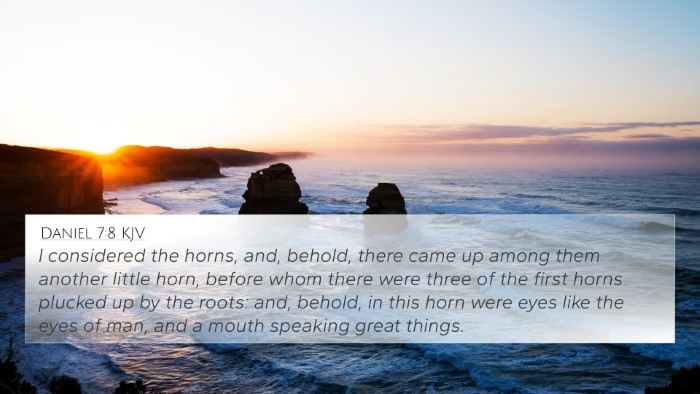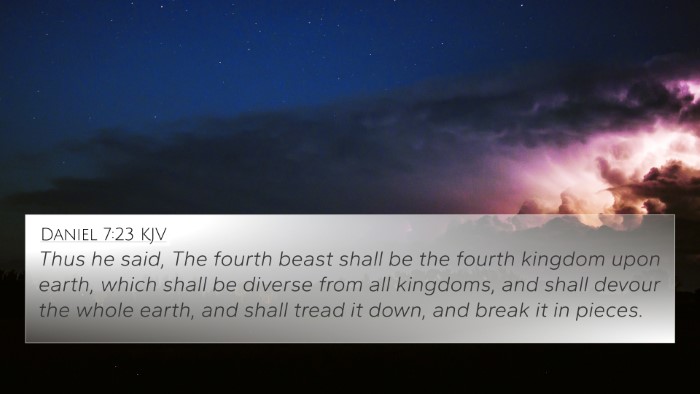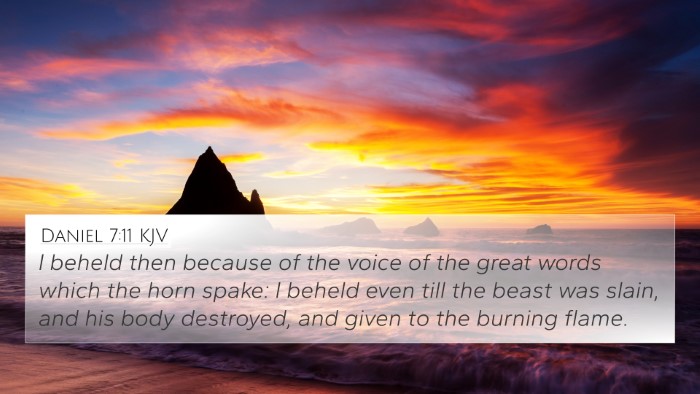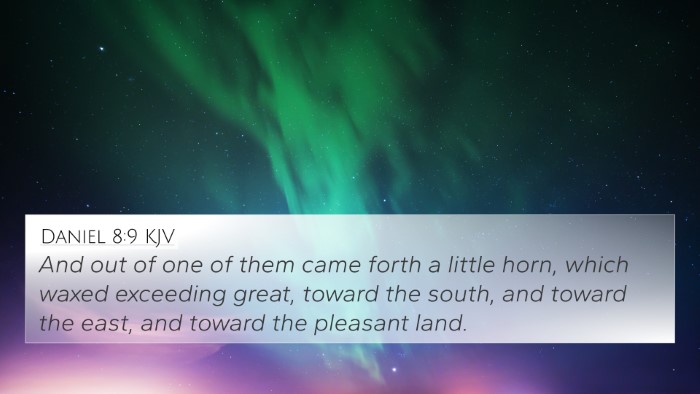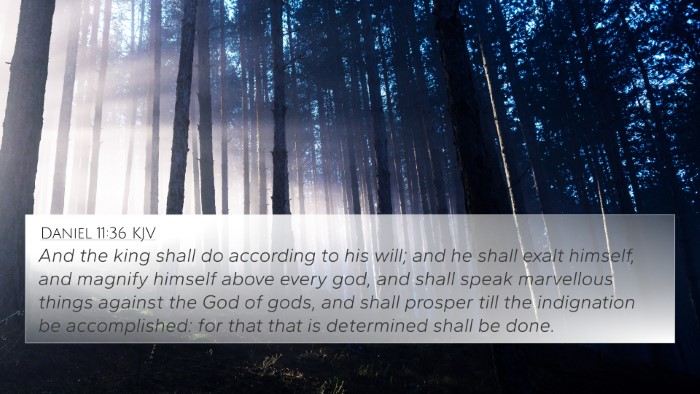Understanding Daniel 7:20
Daniel 7:20 is a pivotal verse in the Book of Daniel, offering profound insights into the vision of the four beasts and particularly the fourth beast. Below, we delve into a combined interpretation drawn from public domain commentaries, highlighting the verse's meaning and connections to other scriptural texts.
Verse Analysis
The verse reads: "And of the ten horns that were in his head, and of the other which came up, and before whom three fell; even of that horn that had eyes, and a mouth that spake very great things, whose look was more stout than his fellows." (Daniel 7:20, KJV)
Commentary Insights
-
Matthew Henry:
Henry emphasizes the emergence of the little horn, a symbol of pride and blasphemous power, revealing the aggressive nature of this figure who opposes God’s people. The horns represent kingdoms, and the little horn's dominion illustrates a corrupt ruler's rise.
-
Albert Barnes:
Barnes focuses on the interpretation pertaining to the Roman Empire, noting that the ten horns symbolize the various kingdoms that arose during this period. The little horn represents a specific power that would emerge prominently, boasting of its strength.
-
Adam Clarke:
Clarke provides insight into how the characteristics of the little horn depict an arrogant leader who blasphemes and persecutes. He points out the significance of the horn's great eyes and mouth, indicating intelligence and power used for malevolent purposes.
Thematic Connections
Daniel 7:20 can be understood within a larger biblical framework. Below are relevant cross-references that enhance the understanding of this verse and its themes:
- Revelation 13:5-6: Speaks of a beast with a mouth speaking great things and blasphemies, paralleling the characteristics of the little horn.
- 2 Thessalonians 2:4: Describes the man of sin who opposes and exalts himself above all that is called God, resonating with the pride of the horn.
- Micah 2:3: WARNING against a powerful figure rising up, emphasizing the themes of judgment against tyranny.
- Romans 1:18-23: Discusses the rejection of God's authority, akin to the arrogance displayed by the little horn.
- Isaiah 14:13-14: Refers to the pride of the fallen one, whose ambition mirrors the boastful nature of the little horn.
- Daniel 7:8: Provides further insight into the little horn's rise amidst the others, illustrating the continuity of its ominous emergence.
- Revelation 17:12: Discusses the ten kings who receive authority, suggesting a connection to the interpretation of the ten horns.
- Isaiah 10:12: Speaks of the arrogance and intent of those who rise against God's people, aligning with the narrative in Daniel.
- Luke 19:14: Highlights rebellion against authority, reflecting the wider theme of opposition found in Daniel 7:20.
- 1 Peter 5:8: Warns about the adversary, akin to the challenge posed by the little horn, emphasizing vigilance against oppressive rulers.
The Purpose of Cross-Referencing
Utilizing tools for Bible cross-referencing facilitates deeper understanding and contextual analysis of scripture. By identifying connections between Bible verses, one can explore thematic links, helping to see the Bible as a cohesive narrative rather than isolated texts.
Conclusion
Daniel 7:20 is emblematic of biblical prophecy concerning the rise of powerful figures that oppose God and His people. Understanding this verse through cross-referencing deepens one's insight into the complexities of biblical themes, enabling a richer appreciation of the interconnectedness within scripture.

